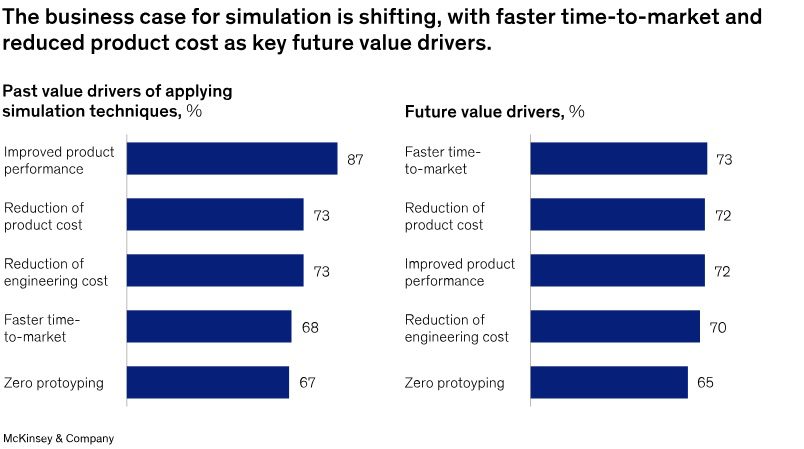It feels like 2023 has been the rise of machine learning and artificial intelligence for many business sectors and industries. AI and machine learning is nothing new. However, the availability and ease of access to the technology from companies such as OpenAI, Google, Amazon, NVIDIA, etc. have opened up the technology to the general public and has fostered rapid growth. The generative AI as a service business is predicted to reach approximately $190 billion by 2032. In this article, we will consider how AI can specifically be used in engineering simulation.
The Impact of AI on Engineering
As AI continues to evolve, it is likely to have a profound impact on engineering processes and practices. Many of the boring and repetitive jobs could be replaced by AI workflows. This is because the real benefit of AI is the speed at which results can be generated. However, it is still essential to review, check, and improve the data that is produced. This is why I do not see it as a threat to engineers, yet. As I was writing this blog I tried using ChatGPT to write this article and it was interesting to see how AI would write about AI. The results were disappointing, to be honest, and although it gave me some ideas of the topics to cover, I opted to not use the majority of the text that was generated. Much of the text that was produced used too many adjectives, see the example quotation:
“At the forefront of this transformation is SimScale, a pioneer in cloud-based simulation solutions, in collaboration with NAVASTO, their esteemed partner, offering ML-based models that propel engineering simulation to new heights.”
ChatGPT
Engineers are however going to have to adapt and adjust to the changing environment or risk falling behind their peers and their competitors. There will be an increased importance for continued learning and experimentation with AI-based tools to ensure that the workforce is up to date with the latest developments. Engineers should not be threatened by AI, as if it is employed carefully and correctly it has the potential to make engineers a lot more effective.
A Step Change in Engineering Design and Simulation
The simulation industry has already been going through a state of rapid change and development with the introduction of truly cloud-based engineering simulation like SimScale. However, AI and ML models have the potential to further change and evolve how simulation is used in the product design cycle (McKinsey).
Traditionally, physics-based simulation has been used late in the design cycle to validate designs and potentially reduce the reliance on physical prototyping. However, in a recent report by McKinsey, they highlight from their surveys of R&D leaders in engineering that the business case for using engineering simulation is moving more towards faster-time-to-market and reduced product cost.

Consider an example of a project to design a water pump to a specific specification for a client:
- Two-month window for pump design.
- First month: Design and CAD geometry based on experience and company precedent.
- Second month: If the CFD team has capacity they simulate the design and determine its performance against the specification.
- There may be a couple of feedback looks required for CAD cleanup operations, etc.
- This leaves limited time in the final week or two for design improvements (one iteration) based on simulation results.
Proposed alternative with AI-based ML model:
- Designer uses existing data for AI prediction of pump performance.
- Early simulation-informed design changes are possible as soon as the designer has a concept CAD model available.
- This opens up the possibility for generative engineering workflows that automatically explore design spades or use automated design approaches.
- Shorter design process duration, reducing project overrun risk and late delivery risk.
- Allows for final simulation validation of the design in a shorter or equivalent time scale.
Predictive AI and Simulation
Predictive AI works by collecting relevant data, using algorithms, and training neural networks to build machine learning models that can predict the outcome of an event or scenario that was not observed in the original data.
For engineering simulation: GNN (Graph Neural Networks) are a powerful method. This is because they can use structured node-based data that is very similar in principle to how a mesh works for engineering simulation with FEA or CFD. However, unlike with engineering simulation, the results that are obtained from a GNN prediction of a simulation are obtained in seconds as opposed to hours with incredible degrees of accuracy.
There are of course challenges associated with predictive AI. The quality of the results that are produced are highly dependent on the quality of the input data that is used for the training. For many organizations, data collection and sorting is one of the biggest challenges when it comes to predictive AI models.
In a similar way to how OpenAI made AI accessible to the masses with ChatGPT, SimScale has partnered with NAVASTO to bring AI-powered simulation predictions to the engineering community without the need to worry about data management. See the release webinar here.


